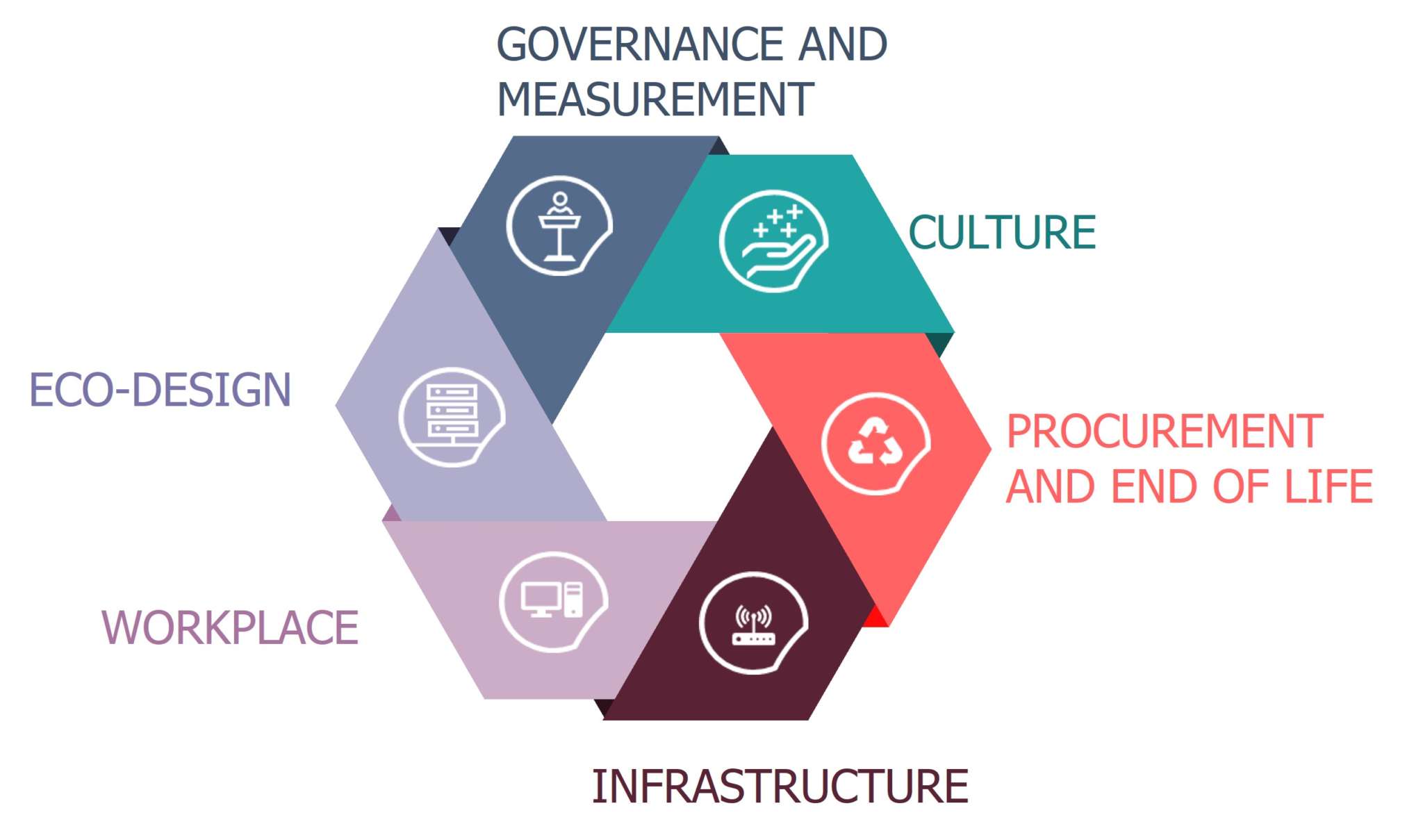Sustainability is a topic many organisations would like to take action on. There are many paths to take however, knowing where to start can be tricky. When beginning this journey, organisations often ask 'What is the best way to build a strategic and cohesive approach that will work?'.
In a previous article, ‘Why should you adopt a greener IT strategy’, it explained the drivers behind companies dedicating budgets and resources to sustainability projects. These drivers range from gaining competitive advantage to an introduction of regulatory requirements, or simply the desire to reduce costs and impact on the environment. The article investigated different avenues for consideration and improvement in regard to end user devices. Although end user devices are one of the key contributors to a company’s carbon emissions, there are a number of other areas that should be considered.
Starting the journey towards sustainable IT can be daunting, however fear not, as the recommended way to start is to understand where the organisation currently sits on this path. This can be achieved by carrying out a maturity assessment. This article explains the key topic areas to cover in a maturity assessment.
A maturity assessment will help to:
- Understand current practices in terms of digital sustainability and the initiatives already implemented
- Determine the current position in the digital sustainability journey and positioning in relation to the market’s best practices
- Establish the organisation’s ambitions and key focus areas within the sustainability space
Undertaking a maturity assessment will enable a baseline to be set. Following this, the ambitions and goals can then be documented in a form of either a strategy, a roadmap or an action plan.
The 6 key topics recommended to perform a maturity assessment
1. Governance and Measurement
Reviewing the existing organisation structure, governance methods and processes, budget allocations and whether there is senior management sponsorship
2. Eco-design
Review project and programme management, architecture, and data management practices to understand if considerations are being made within their processes.
3. Workplace
Determine the volume of your end user devices, how they are managed throughout their lifecycle and how they are used.
4. Culture
Understand if employees are aware of the issues related to sustainability and its impact, analyse their skills, and review any required training.
5. Procurement and End of Life
Examine procurement practices and methodologies to determine whether they include sustainability criteria. Evaluate equipment end of life policy.
6. Infrastructure
Investigate the state and efficiency of your datacentres, cloud and network services.
What happens after the maturity assessment is complete?
If there is a requirement to dig deeper after the initial assessment, focus on understanding the future state and build a roadmap to get there, step by step. An optional phase is to analyse carbon footprint to pinpoint the biggest pollutants in the IT environment. This additional information will enable a specific and measurable action plan to be created, which focuses on reducing carbon emissions.




